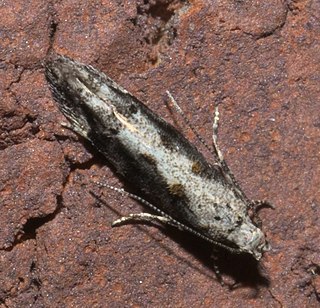
Coleotechnites is a genus of moths in the family Gelechiidae described by Vactor Tousey Chambers in 1880. One of the best known species is the lodgepole needle miner, a serious pest of forest trees in North America.

Exoteleia is a genus of moths in the family Gelechiidae.
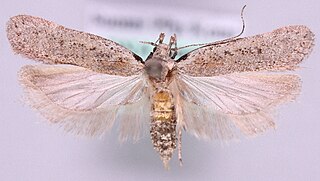
Gelechia is a genus of moths in the family Gelechiidae. The type species is Gelechia rhombella.
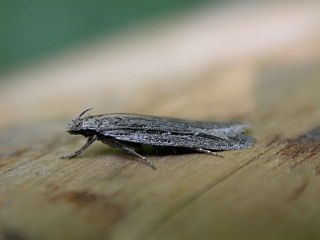
The juniper gelechiid moth is a moth of the family Gelechiidae. It is known from most of Europe. It is an introduced species in Great Britain and North America through accidental introduction in garden junipers.

Gelechia rhombella, the apple groundling, is a moth of the family Gelechiidae. It is found in Europe, the Caucasus, Transcaucasia, southern Siberia, the Russian Far East, Korea and China.
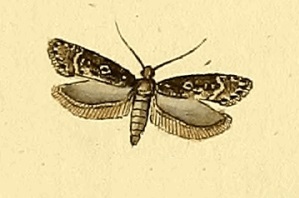
Gelechia sororculella, the dark-striped groundling, is a moth of the family Gelechiidae. It is widely distributed from Europe, throughout Siberia to the Russian Far East.
Gelechia jakovlevi is a moth of the family Gelechiidae. It is found in Finland, the Baltic region, Ukraine, the European part of Russia, Siberia and Mongolia.
Gelechia basipunctella is a moth of the family Gelechiidae. It is found in from central Europe to Russia, Turkey and Mongolia.
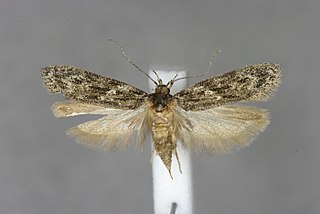
Gelechia muscosella, the grey sallow groundling, is a moth of the family Gelechiidae. It is found in Europe. It is also found in the Caucasus, Siberia and the Russian Far East.

Gelechia turpella, the grand groundling, is a moth of the family Gelechiidae. It is widely distributed in Europe. Outside of Europe, it is found from the Caucasus to Siberia and the Russian Far East. The habitat consists of woodlands and parks.

Gelechia senticetella, the cypress groundling, is a moth of the family Gelechiidae. It was described by Otto Staudinger in 1859. It is found in most of Europe, including Austria, Belgium, Bosnia and Herzegovina, Croatia, Cyprus, France, Germany, Greece, Hungary, Italy, North Macedonia, Sicily, Slovakia, Spain, Switzerland and Ukraine. It is thought to be an introduced species in Great Britain.
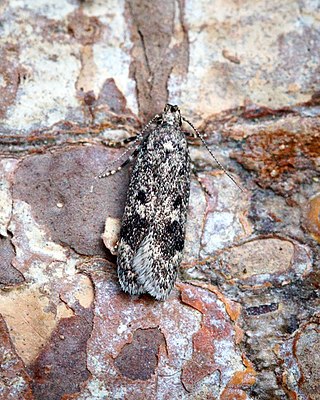
Gelechia scotinella, the thicket groundling, is a moth of the family Gelechiidae. It was described by Gottlieb August Wilhelm Herrich-Schäffer in 1854 and is found in almost all of Europe. The habitat consists of mature hedgerows and scrubland.

Gelechia rhombelliformis is a moth of the family Gelechiidae. It was described by Otto Staudinger in 1871. It is found from the Netherlands and Germany east to Russia and from Denmark and Latvia south to Austria, Hungary and Romania.
Gelechia cuneatella, the long-winged groundling, is a moth of the family Gelechiidae. It was described by Douglas in 1852. It is found in northern, central and eastern Europe, Russia, China and Japan. The habitat consists of river banks and marshes.
Gelechia obscurella is a moth in the family Gelechiidae. It is found in North America, where it has been recorded from Kentucky.
Gelechia mediterranea is a moth of the family Gelechiidae. It is found in France, Spain and Greece, as well as on Sardinia and Crete.
Gelechia bianulella is a moth of the family Gelechiidae. It is found in North America, where it has been recorded from California, Colorado, Montana, New Mexico, Oklahoma and Texas.
Gelechia gracula is a moth of the family Gelechiidae. It is found in North America, where it has been recorded from Texas.
Gelechia omphalopis is a moth of the family Gelechiidae. It is found in Namibia.
Gelechia thymiata is a moth of the family Gelechiidae. It was described by Edward Meyrick in 1929. It is found in North America, where it has been recorded from Arizona.










